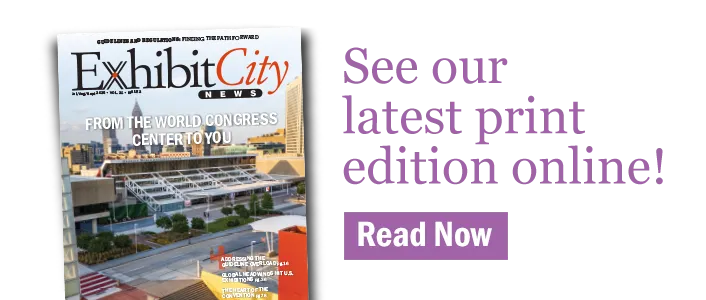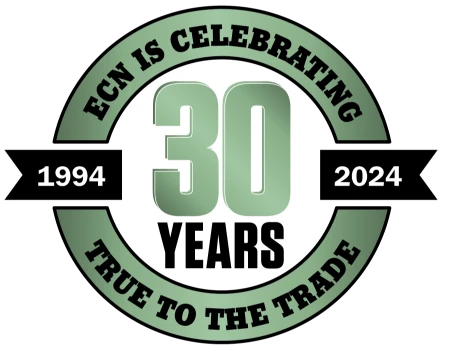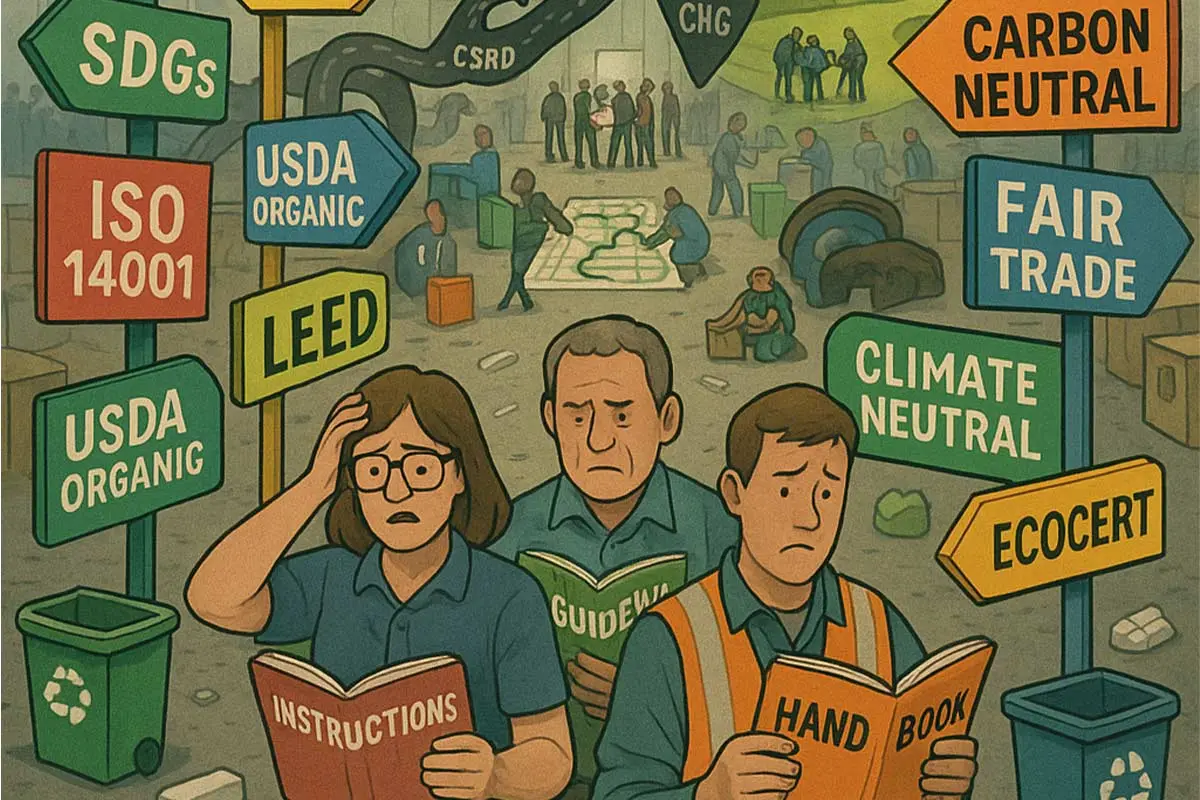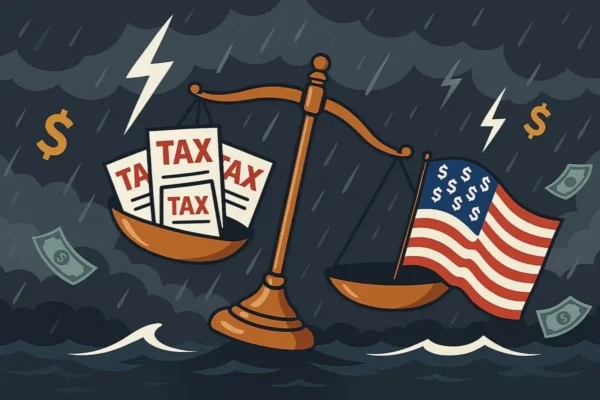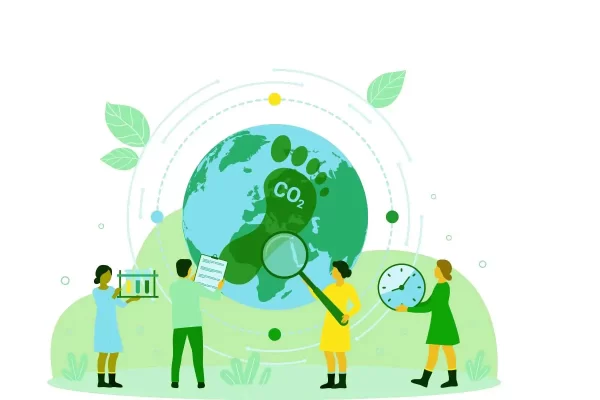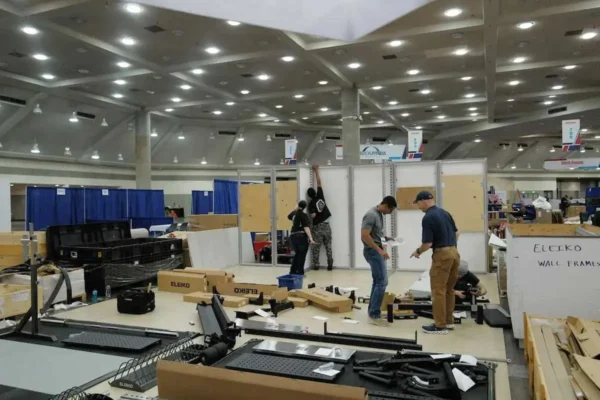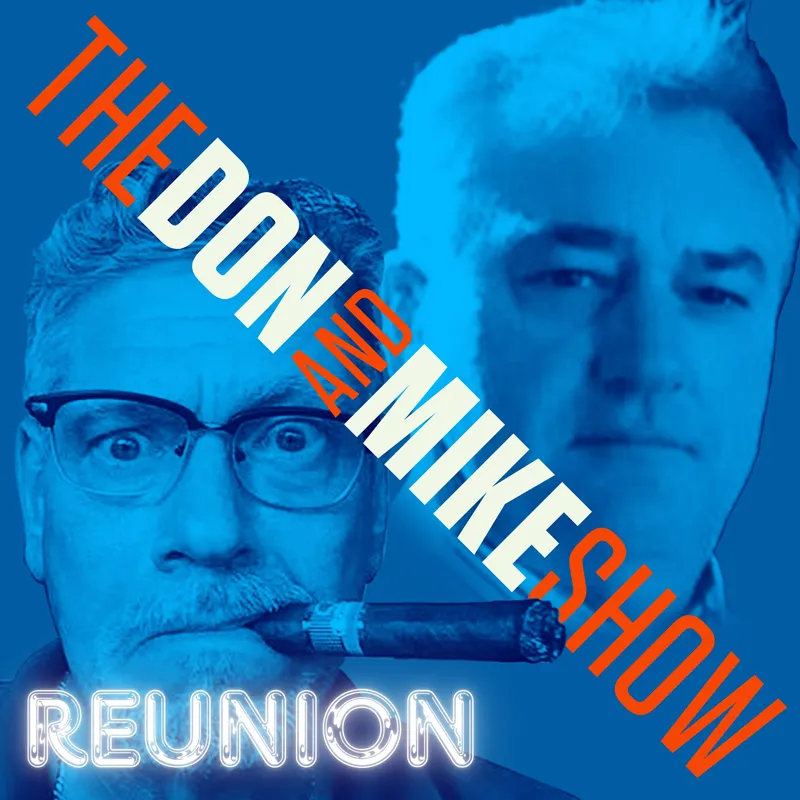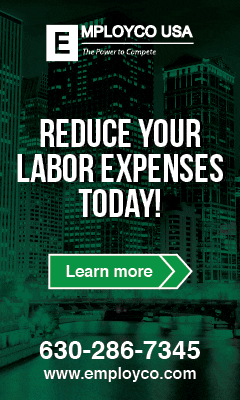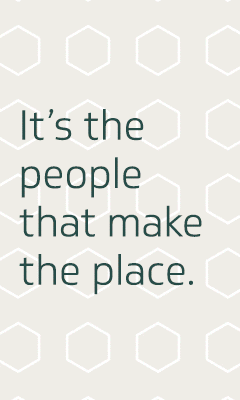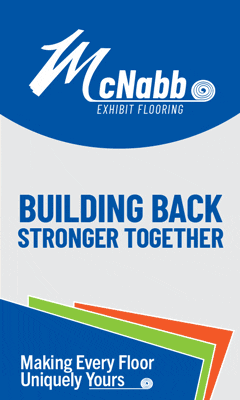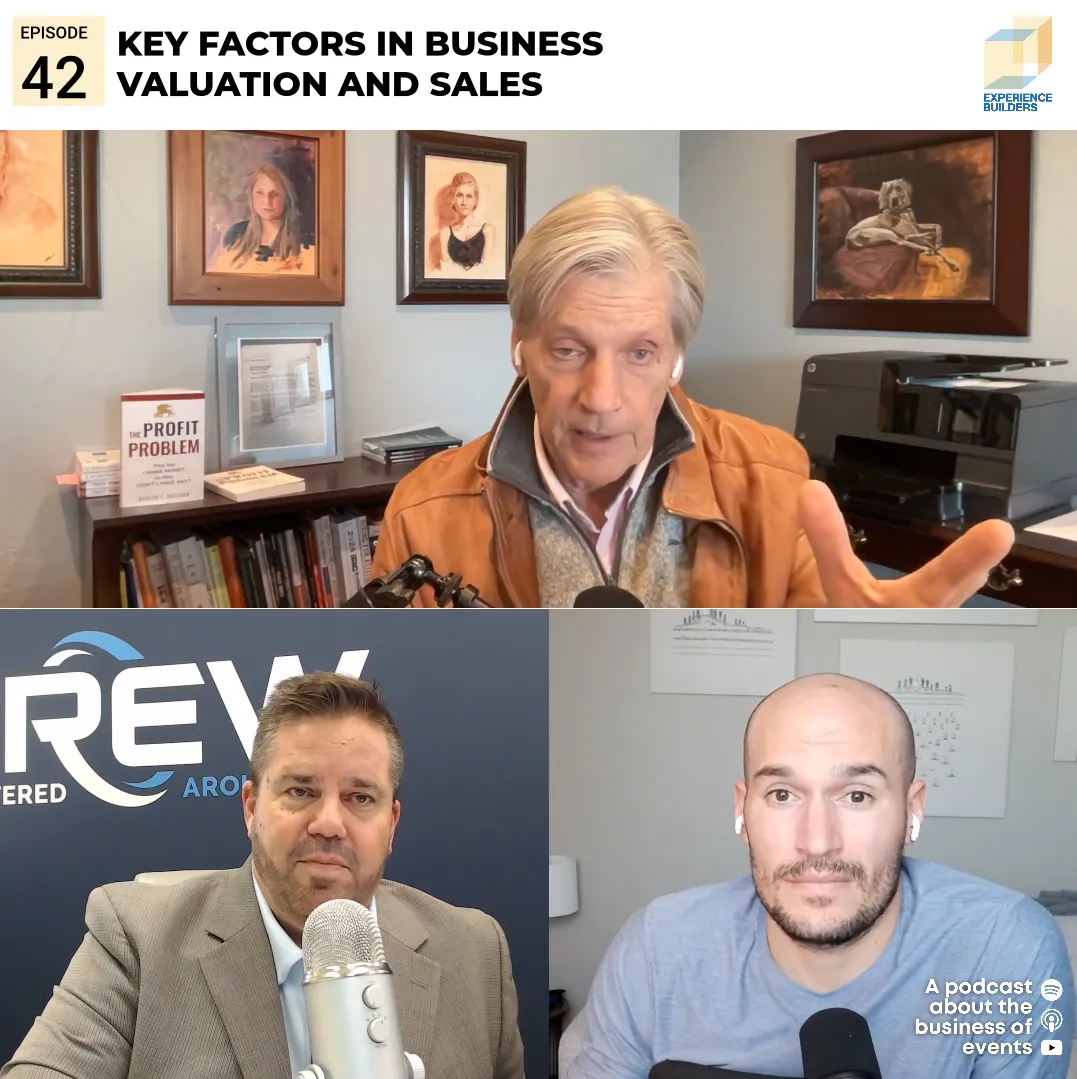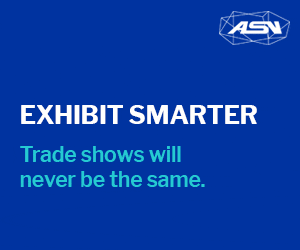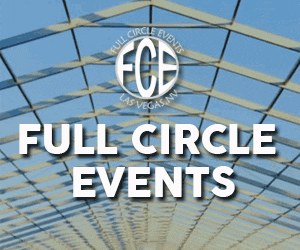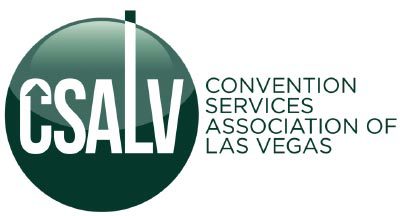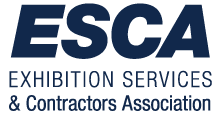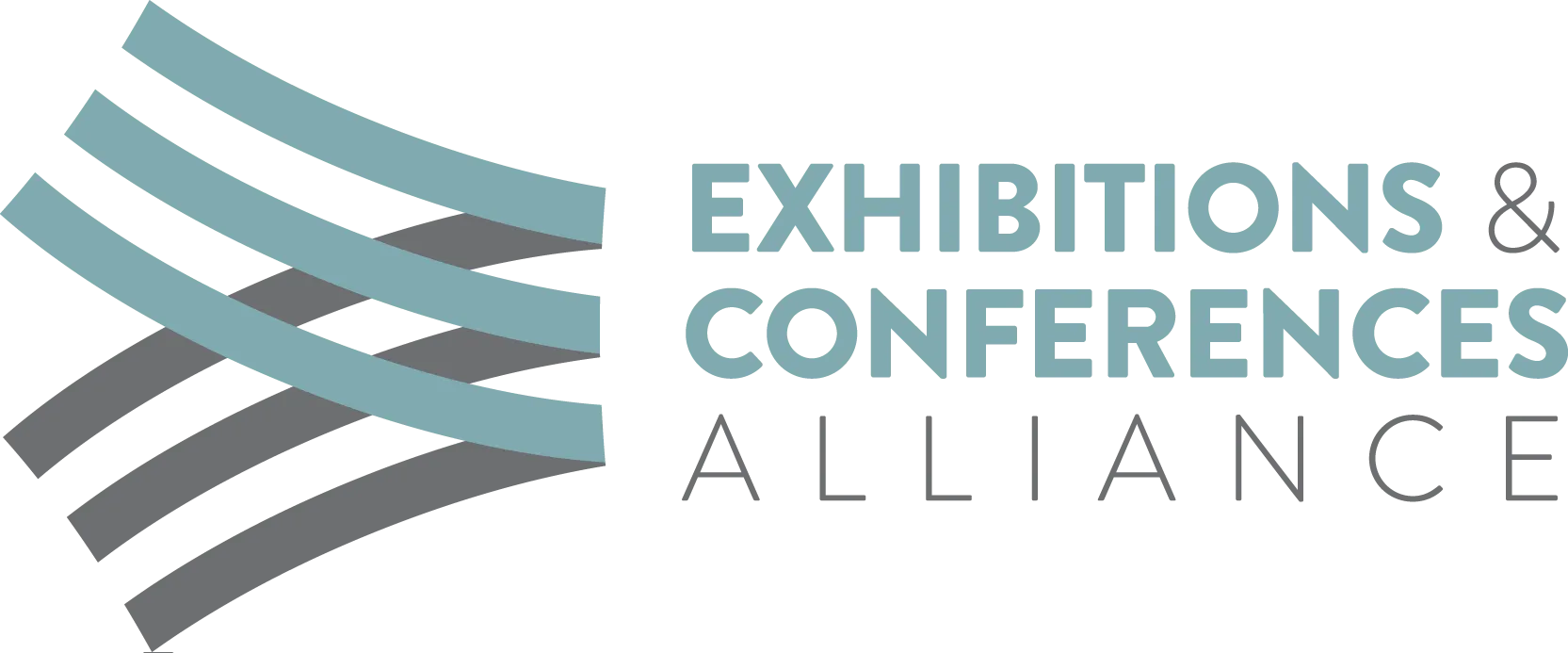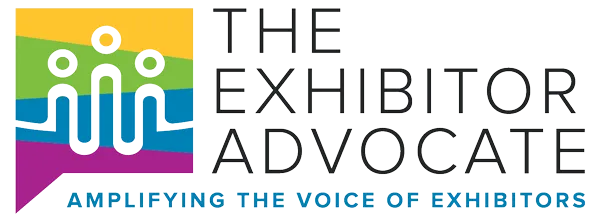As sustainability rules multiply across the tradeshow industry, labor crews are caught in the middle. Can the sector align on one practical, unified standard before confusion turns into burnout?
“Too Many Rules, Not Enough Road”
The lights were still warming up on the show floor when a union crew member turned to a contractor and shook his head. “Wait, are we following the client’s guidelines, the venue’s policy, or the decorator’s checklist on this one?” he asked, looking down at the pallet of recyclable graphics and stack of packing foam. “Because I’ve seen three different instructions on what to do with this stuff.”
That kind of confusion has become common in the tradeshow industry. The momentum toward sustainability is real, but the roadmap is getting harder to follow.
Over the last five years, companies, large and small, have made ambitious pledges. Many signed onto Net Zero Carbon Events commitments. Others are aligning with Environmental, Social, and Governance (ESG) standards, International Organization for Standardization (ISO) certifications, or custom sustainability programs built in-house. Venues have drafted their own rules. So have general contractors. So have the brands exhibiting. So have the builders.
But instead of alignment, the result is often gridlock. As one industry insider puts it, everyone may be headed in the same direction. But they’re following different maps, speaking different languages, and rarely coordinate the route.
That complexity creates real burdens for the crews tasked with executing it. From show floor labor to freight logistics to exhibit installation, operational teams are being asked to implement sustainability mandates, often without warning or preparation.
Julie Kagy, executive director of the Exhibition Services & Contractors Association (ESCA), says that in many cases, those decisions are being made without input from the people doing the work. “Venues are establishing processes that contractors are expected to follow, but without being part of the discussion,” she says. “That creates friction and confusion. If a sustainability goal can’t be met with the labor or time that’s scheduled, it ends up getting missed or just costing more.”
Jim Obermeyer, chair of the Experiential Designers and Producers Association’s (EDPA) sustainability committee, says the real world on the show floor rarely looks like the guidelines. “You walk the floor during setup and see cardboard, foam, plastic wrap, everything headed straight for the trash,” he says. “Companies are trying, but right now, everyone’s approaching it differently—with varying results.”
The tradeshow industry isn’t short on sustainability ambition. But as one insider put it, the growing number of frameworks, certifications, and guidelines can feel like “12 rulebooks for the same game.”
What would it take to build a shared, practical playbook: one that’s ambitious, implementable, and not just another set of boxes to check?
That’s the question this story sets out to explore.
The Overload – “A Tangle of Good Intentions”
Nobody’s arguing that sustainability isn’t important. Sustainability has become a baseline expectation across much of the tradeshow world. But the industry’s passion for progress has also led to an unintended side effect: a flood of guidelines—often overlapping, inconsistent, or incompatible.
“We’re seeing a real surge in demand for sustainable practices,” says Marsha Flanagan, president and CEO of the International Association of Exhibitions and Events (IAEE). “But what’s also rising is confusion—especially when labor and ops teams are handed guidance that conflicts from one show to the next. Waste diversion rules, sourcing policies, carbon tracking—it all varies, depending on which venue, organizer, or contractor is calling the shots.”
That inconsistency adds cost and slows down execution. Even when everyone is trying to do the right thing, the lack of a shared framework can make collaboration harder.
Kagy sees the same pattern playing out. “The labor teams are under pressure to turn a hall quickly, and then a new guideline shows up telling them to sort materials at the dock. “But there’s no added time, no added crew, no added equipment,” she says. “That’s where these policies break down. They weren’t built with operations in mind.”
That’s not to say the current efforts lack value. In fact, many of the guidelines circulating in the industry today—like the Net Zero Carbon Events roadmap, ISO 20121, and the Events Industry Council (EIC) Sustainable Event Standards—have been developed with input from hundreds of subject matter experts. They offer real tools. But they don’t always speak the same language. And they certainly aren’t designed for interchangeable use on show floors.
Glenn Hansen, who helped author the Guidance for Sustainable Exhibition Stand Construction (GSESC) for EDPA, puts it this way: the problem isn’t just having too many cooks. It’s that the cooks are using different recipes, in different kitchens, for the same meal. “The events industry has the same issue that financial reporting had a few years ago: an alphabet soup of standards,” he says. “Each one might be thoughtful on its own, but together they create noise.”
And when there’s noise, companies often fall back on the easiest path.
In practice, some companies gravitate toward the simplest standard they can reasonably meet. That’s not out of indifference, but because of tight budgets, fast timelines, and the complexity of juggling multiple frameworks. As one insider observed, when efforts default to the most basic requirements, it becomes much harder to drive meaningful progress.
So where do we go from here?
Where It’s Breaking Down – “On the Floor, It Falls Apart”
If the tradeshow floor is where the magic happens, it’s also where sustainability guidelines are most likely to break down.
Kagy says the problem often starts with who’s at the table. “When policies are developed without input from the crews who actually carry them out, they’re more likely to break down onsite,” she says. “The result isn’t just confusion—it’s extra cost and extra stress for the people on the ground.”
One example: labor teams are expected to separate waste at the dock. It sounds simple on paper, but the reality is much more complicated.
“You can’t just bolt sustainability onto a load-in schedule that’s already tight,” Kagy says. “If the team is not staffed for it, or there’s no space or equipment set up for sorting, then what happens? Corners get cut—or nothing happens at all.”
The data side isn’t much better. Hansen, also of Reduce 2, sees it all the time: organizers and suppliers are being asked to measure carbon emissions and sustainability impacts, but no one agrees on how or what to measure. “The real vulnerability is in the data,” he says. “Everyone wants to track progress, but people don’t know what to collect. So, you get garbage in, garbage out.”
Even when companies do collect good data, the methodologies are changing so fast that comparisons can become meaningless. “One year, a business-class flight might count as two economy seats. The next year, it’s four,” Hansen says. “So now your carbon footprint from 2023 can’t even be compared to 2024. What are you supposed to do with that?”
There’s also the issue of digital friction. Hansen says event registration platforms—valuable tools for gathering sustainability data—often won’t touch the topic. “Those platforms treat the reg form like prime real estate. They don’t want to add one more question, even if it’s something critical like attendee travel or hotel data. But that data is essential for understanding an event’s footprint.”
Obermeyer, who recently spent six weeks at five different shows, says the contrast is easy to spot. Some areas are still generating large volumes of waste—unused materials, discarded signage—while others are making visible shifts. “You’re starting to see more reusable structures, and more teams asking the right questions at the dock,” he says. “There’s real momentum in pockets, but the industry still has a long way to go.”
James Zacharias, division president at Brumark, says much of the confusion stems not from conflicting mandates, but from the assumption that sustainable practices are inherently costly or complex. “The biggest disconnect is the perception that sustainability is expensive and complicated,” he says. “In reality, our program is designed to do the opposite—it simplifies the process and integrates recovery and recycling directly into the show floor experience.”
His company has focused on making those solutions work for all stakeholders. “We’ve developed adaptable programs that meet partners where they are,” Zacharias explains. “EACs get a streamlined recovery model that’s easy to plug into operations. For general contractors and organizers, we’ve built a scalable flooring recovery program that can also drive potential revenue.”
By reducing friction, you make it easier to build buy-in,” he adds. “When sustainability is effortless, participation goes up—without adding complexity for our clients.”
The bottom line? These breakdowns aren’t caused by a lack of will. “It’s not that people don’t care,” Kagy says. “It’s that the current system doesn’t make it easy to care.”
And without alignment on what matters, what’s feasible, and how it’s tracked, everyone ends up making it up as they go. That’s not a strategy. That’s burnout.
A Call for Cohesion – “Everyone Wants Alignment, But…”
For all the confusion on the ground, there’s a surprising amount of agreement at the top: most major industry groups want to see sustainability guidance brought into better alignment.
“There’s a real appetite for collaboration,” says Dasher Lowe, executive director of EDPA. “We’re not saying everything has to be standardized down to the bolt. Still, there’s clearly value in a framework that allows for segment-specific guidance within an overall industry direction.”
Lowe points to the GSESC, developed jointly by EDPA, ESCA, and EIC, as a step in that direction.
“It was built to be practical,” he says. “And the fact that our members and clients are already using it to shape RFPs tells us we’re on the right track. But the bigger question is: what comes next? Who brings all these frameworks together?”
IAEE President and CEO Marsha Flanagan echoes that sentiment. “Our industry is incredibly diverse,” she says. “Different geographies, business models, and stakeholders. It’s complicated. But that’s exactly why we need to start coordinating.”
Flanagan says IAEE isn’t trying to reinvent the wheel with a new standard. Instead, the organization is encouraging the adoption of proven guidance, including tools from EIC and the Joint Meetings Industry Council. “The risk if we don’t align is that regulation will step in and make the choice for us,” she says. “That’s why we’re working now, voluntarily and proactively, to build toward something unified.”
The common thread running through all these responses? Nobody’s arguing for more checklists or more acronyms. If anything, the goal is fewer. And while no one claims that a perfect, one-size-fits-all solution is possible or even desirable, there is growing consensus that the time to start aligning is now.
“This isn’t just a strategic priority,” says Kagy. “It’s a window of opportunity. We need to stop monetizing sustainability and start embedding it. That’s only going to happen if we start rowing in the same direction.”
Models That Work – Building Blocks, Not Silver Bullets
The good news? There’s no shortage of smart, functional sustainability frameworks already in circulation. The challenge, stakeholders say, isn’t inventing new models. It’s recognizing what’s already working and figuring out how to scale it.
One of the most prominent examples is the GSESC, a collaborative effort between EDPA, ESCA, and EIC. Released in late 2023, the document offers clear, actionable steps for design and production firms looking to reduce waste, source materials responsibly, and track sustainability performance across their exhibit builds. It was created with input from dozens of companies and is currently being updated to include a new scoring system for deeper accountability.
Obermeyer says the impact has been tangible. “Our members were looking for something they could actually use. Not just a white paper, but a tool that could live inside an RFP,” he says. “And that’s exactly what this has become. Clients are referencing it. Designers are using it. It’s created a common language, and we’re already seeing results.”
Hannah Deters, IAEE’s director of events and sustainability, says the association’s newly launched Sustainability Toolkit is designed to meet organizers where they are, whether they’re beginners or already deep into decarbonization efforts. “The goal is to offer flexibility without confusion,” Deters says. “Actionable steps, clear accountability, and room for customization. We’re not here to dictate; we’re here to support.”
The Toolkit offers a five-step, 16-module structure that’s intentionally flexible—allowing event teams to adopt and scale based on their own maturity level and event size. “We didn’t want to create something aspirational that no one could act on,” says Deters. “This is built to work in the real world—with timelines, budgets, and staff constraints.”
EIC has taken a broader approach, establishing a full suite of sustainability standards along with the Sustainable Event Professional Certificate (SEPC) program. Amy Calvert, EIC’s CEO, says her team’s sustainability standards were developed with input from more than 300 subject matter experts from all corners of the industry. “It gives the standards credibility, but it also gives them depth. They weren’t built in a vacuum. We see these as the foundation of a shared playbook,” she says. “Adoption is growing, especially when organizers and contractors use the standards together, as a collaborative framework.”
Zacharias agrees these frameworks have real value—especially when they support gradual adoption. “Sustainability isn’t a sprint—it’s a marathon,” he says. “Every step forward is progress, and these frameworks empower businesses to integrate sustainable practices in ways that make sense for their current operations and future goals.”
Yet even the best tools face barriers to universal adoption.
“There’s no central referee,” says Kagy. “You’ve got five different playbooks out there, and nobody’s coordinating the plays. That leads to duplication and confusion.”
Hansen agrees. As a technical advisor on the GSESC document, he’s worked across several standards groups. “They’re all trying to solve the same problem,” he says. “But unless we consolidate or at least align these tools, we’re just overwhelming the people on the show floor.”
In other words, the frameworks exist. The roadmaps are drawn. What’s missing is the glue that holds them together.
The Road Ahead – Can the Industry Get in the Same Car?
If there’s one thing nearly every stakeholder agrees on, it’s this: the industry can’t afford to stay fragmented forever.
“We know you can’t snap your fingers and make one all-encompassing framework overnight,” says Lowe. “It has to be collaborative—and it has to respect the differences between industry verticals.”
That’s why multiple organizations are beginning to explore how their tools can live under a shared umbrella. Some point to the Industry Collective, a growing coalition of groups including EDPA, ESCA, IAEE, and others, as the natural convener for a cross-sector effort. Others say it’s less about a single document and more about agreement on the core areas that any responsible guidance should cover.
Kagy suggests it may be time to hit pause on new sustainability guidelines and focus instead on integrating what’s already in circulation. “Let’s stop reinventing the wheel and focus on integrating what we’ve already got,” she says. “Pick a central home. Create a central repository. Build from there.”
Hansen says any future framework also needs to be informed by real-world data—and a shared understanding of what’s measurable. “We’ve got better tools now than we did five years ago,” he says, “but there’s still a long way to go. If the industry wants consistent reporting, we need consistent baselines.”
There’s also the looming threat that inaction could invite outside regulation. “If we don’t figure this out soon,” says Kagy, “someone else will. And they probably won’t understand the nuance of what happens on a show floor.”
That’s the window the industry is staring at now: align on its own terms, or risk having the rules written by people who’ve never worked on a tradeshow.
One Guideline, or a Missed Opportunity?
The idea of a single, unified sustainability standard might feel ambitious or even improbable. But stakeholders warn the alternative is far worse.
“Right now, the train is moving whether we’re ready or not,” says Hansen. “And if we let the guidelines continue to multiply unchecked, we’re going to end up with confusion, burnout, and missed goals. If we want to stay in control of our industry’s future, the time to act is now.”
The real risk isn’t just confusion, it’s irrelevance. Several interviewees noted that if the industry can’t come together, regulators might do it for them. That’s not a theoretical concern. Around the world, governments are taking a harder look at event emissions, supply chain waste, and labor sustainability. If the tradeshow sector can’t speak with a unified voice, it may lose the opportunity to help shape the policies that are coming.
But there is hope. Many of the pieces already exist—robust toolkits, credible frameworks, engaged stakeholders. What’s missing is the bridge between them.
As Kagy emphasized, sustainability can’t be a marketing checkbox or an afterthought. It needs to be part of how the industry operates—built into every show, every hall, every load-in and teardown. That kind of shift, she suggests, requires trust and shared commitment. It’s not about credit—it’s about doing the right thing in a consistent, practical way.
And that includes giving labor a seat at the table, not just a checklist. As Obermeyer puts it, “If your policy falls apart on the dock, it wasn’t a very good policy to begin with.”
So, what happens next?
Ideally, a coordinated move toward consolidation won’t be driven by regulation, but by a shared desire to reduce the noise, align on what matters, and build something practical that lasts. Maybe it won’t be one rule to rule them but one guideline that doesn’t require a decoder ring might be a good place to start.
Until then, the message from the show floor is clear: the more we unify, the more we all stand to gain.
What Should a Unified Standard Include?
If the industry were to align around a shared sustainability framework, here’s what stakeholders say it must address:
- Labor Execution: Realistic timelines, staffing support, and procedures for onsite waste sorting and material handling
- Material Guidelines: Transparency of sourcing, reusability standards, and clear recycling mandates
- Logistics & Transportation: Carbon-conscious freight, eco-friendly packaging, and incentives for consolidation
- Carbon Accounting: Consistent Scope 3 measurement, verifiable baselines, and apples-to-apples tracking over time
- RFP Language: Standardized sustainability clauses for venues, suppliers, and contractors
- Onsite Waste Strategy: Joint planning between venues and contractors, with clear sorting and disposal protocols
- Data Collection & Sharing: Tools that enable consistent, comparable data across shows and stakeholders
- Scalability: Guidance that works for both single booth exhibits and citywide conventions
Tools for Taming the Tangle
Here are the major sustainability frameworks, toolkits, and certifications referenced by stakeholders in this story—each offering a different piece of the puzzle:
- Net Zero Carbon Events Roadmap
A global initiative guiding the events industry toward net zero emissions by 2050, with a focus on collaboration and carbon tracking. - ISO 20121: Event Sustainability Management Systems
An international standard offering a framework to design and deliver sustainable events, used across global venues and suppliers. - EIC Sustainable Event Standards
A suite of standards developed by the EIC to assess environmental and social performance across suppliers and events. - Guidance for Sustainable Exhibition Stand Construction (GSESC)
Created by EDPA, ESCA, and EIC, this document outlines actionable steps for exhibit producers and contractors to reduce environmental impact. - IAEE Sustainability Toolkit
A five-step, 16-module guide designed for exhibition organizers at any stage of their sustainability journey. - Sustainable Event Professional Certificate (SEPC)
An educational program by EIC that provides comprehensive training on sustainable event planning and reporting.
Five Questions Every Organizer Should Ask
Before setting sustainability goals, align these with your partners:
- Who’s responsible for implementation—venue, GC, or labor crew?
- Do our sustainability targets align with show floor realities?
- Are we measuring the same data, in the same way, as last year?
- Have contractors had input on timelines and waste handling?
- Are our RFPs setting clear, achievable sustainability expectations?
How We Got Here
Milestones in the industry’s push for sustainability:
- 2012: ISO 20121 launched as the first formal event sustainability framework
- 2018–2021: Net Zero Carbon Events movement begins gaining traction
- 2023: EDPA, ESCA, and EIC publish the GSESC guidelines
- 2024: IAEE releases its Sustainability Toolkit
- 2025: Growing call for consolidation and shared frameworks
This story originally appeared in the Q3 2025 issue of Exhibit City News, p. 18. For original layout, visit https://issuu.com/exhibitcitynews/docs/exhibit_city_news_-_jul_aug_sept_2025/18.



